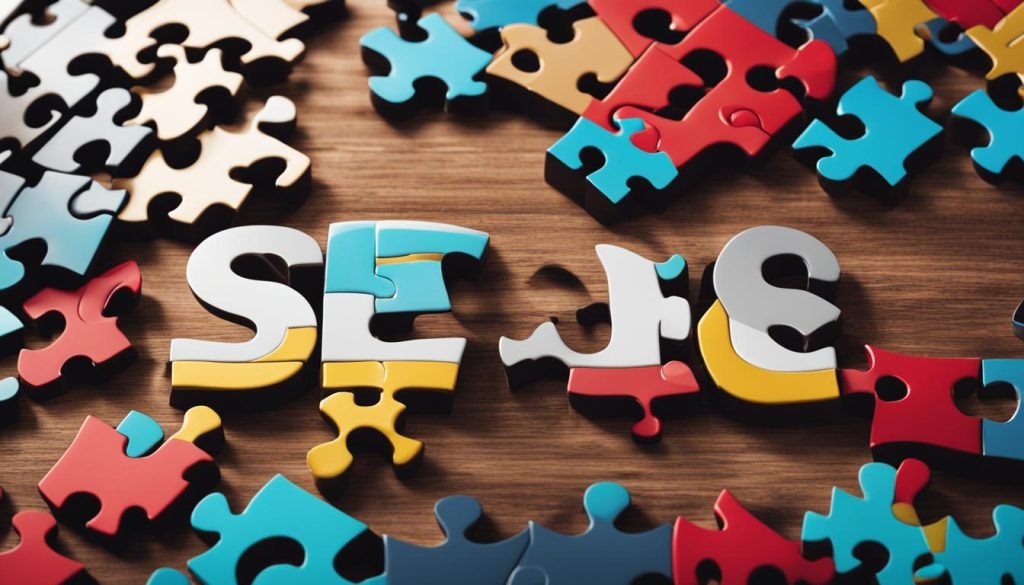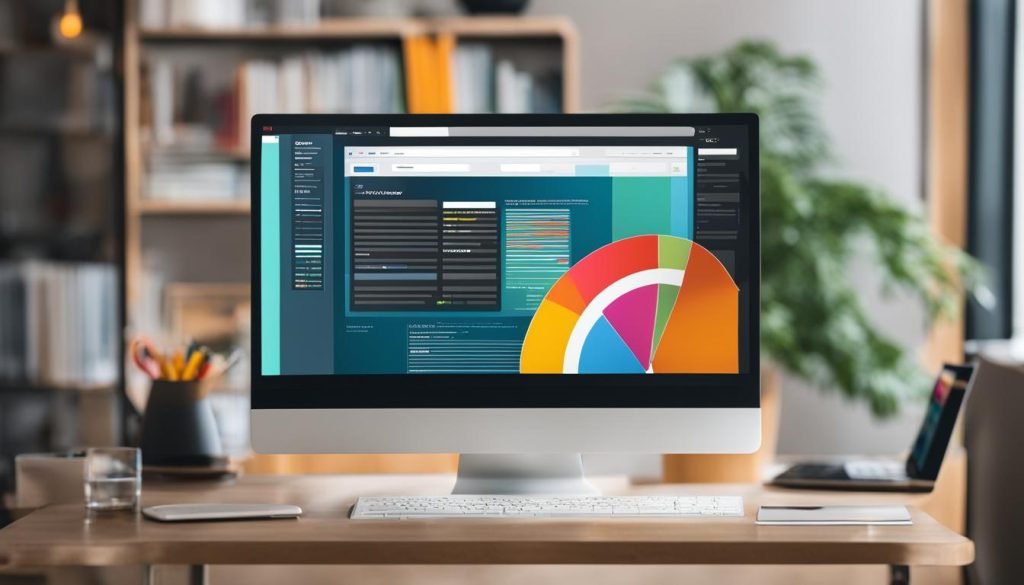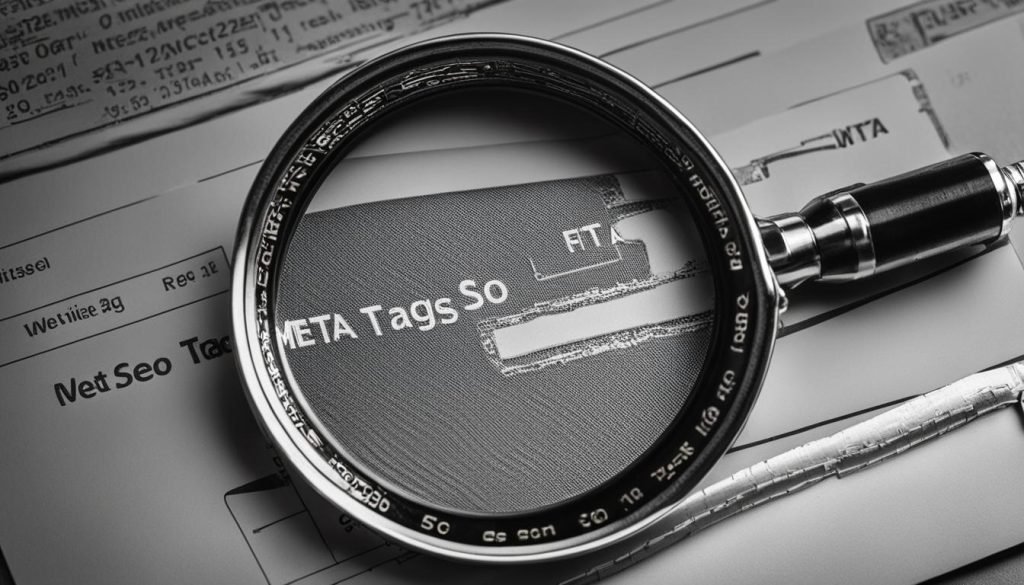When it comes to improving your website’s search engine rankings and driving organic traffic, on-page search engine optimization (SEO) is essential. By optimizing various elements on your web pages, you can enhance your website’s visibility and relevance to search engines, ultimately leading to higher rankings.
On-page Search Engine Optimization involves various techniques, including keyword research, meta tag optimization, content optimization, internal linking, image optimization, site speed optimization, and creating a seamless user experience. These strategies work together to ensure your website is well-structured, easy to navigate, and optimized for search engines and users.
Staying up-to-date with the latest on-page SEO techniques is crucial as search engine algorithms constantly evolve. However, it’s essential to understand the core fundamentals of on-page SEO, which lays the foundation for effective optimization.
Table of Contents
What is On-Page SEO and Why is it Important?
On-page SEO, also known as on-site SEO, is a crucial aspect of website optimization that focuses on optimizing individual web pages to improve search engine rankings and drive organic traffic. It involves optimizing various elements within the webpage, including content, HTML tags, images, and internal linking, to enhance its visibility and relevance to search engines.
The importance of on-page SEO lies in its ability to help search engines understand the content and context of a webpage. By implementing on-page SEO techniques, businesses can improve their chances of ranking higher in search engine results pages (SERPs) for relevant keywords and phrases. Higher rankings lead to increased visibility, which drives more organic traffic to the website.
Optimizing on-page elements such as meta tags, keyword placement, and content structure improves search engine rankings and enhances the user experience. A well-optimized webpage provides valuable and relevant information to users, resulting in higher engagement, longer dwell time and increased chances of conversions.
In summary, on-page SEO is a fundamental aspect of website optimization that focuses on optimizing individual web pages to improve search engine rankings and drive organic traffic. By implementing on-page SEO techniques, businesses can enhance their visibility, relevance, and overall user experience, leading to increased organic traffic and better search engine rankings.
The importance of on-page SEO:
- Improves search engine rankings
- Drives organic traffic
- Enhances user experience
- Increases engagement and conversions
Table: Elements of On-Page SEO
| Element | Description |
|---|---|
| Content | High-quality, relevant, and optimized content |
| HTML tags | Optimized title tags, meta descriptions, and header tags |
| Images | Optimized image alt tags and file names |
| Internal linking | Structure of internal links within the website |
By focusing on these elements, businesses can improve their on-page SEO and increase their chances of ranking higher in search engine results pages. Implementing on-page SEO techniques is an essential part of any comprehensive SEO strategy.

The Basics of On-Page SEO
When it comes to on-page SEO, a few key elements form the foundation of a successful optimization strategy. These basics include optimizing your content with relevant keywords, optimizing meta tags, and structuring your URLs in a search engine-friendly manner.
Optimizing Content
One of the most important aspects of on-page SEO is optimizing your content. This involves creating high-quality, valuable content relevant to your target audience. By conducting keyword research and incorporating relevant keywords into your content, you can increase your chances of ranking higher in search engine results.
Additionally, it’s essential to focus on the readability and user-friendliness of your content. Use subheadings to break up your content into easily digestible sections, and include bullet points or numbered lists to make your content more scannable. This can help improve the overall user experience and keep visitors engaged on your website.
Optimizing Meta Tags
Meta tags, including titles and meta descriptions, are crucial in on-page SEO. The title tag is displayed as the clickable headline in search engine results and should accurately describe the content of your page. It’s essential to include relevant keywords in your title tag and ensure it remains concise and compelling.
The meta description briefly summarizes your page’s content and appears below the title tag in search engine results. This is an opportunity to entice users to click through to your website, so make sure your meta description is well-written and includes relevant keywords.
URL Structure
Another important aspect of on-page SEO is optimizing your URL structure. A search engine-friendly URL structure should be descriptive and easy to understand for both search engines and users. This means including relevant keywords in your URLs and avoiding unnecessary parameters.
Using hyphens to separate words in your URLs can improve readability and make it easier for search engines to understand the context of your pages. Additionally, implementing canonical URLs can help prevent duplicate content issues and ensure that search engines index the correct version of your pages.

Table: On-Page SEO Basics Summary
| Optimization Element | Description |
|---|---|
| Content Optimization | Create high-quality, valuable content with relevant keywords. |
| Meta Tag Optimization | Optimize title tags and meta descriptions for click-through rates. |
| URL Structure Optimization | Create search engine-friendly URLs with relevant keywords. |
Keyword Research for On-Page SEO
Keyword research is vital in on-page SEO as it helps identify the most relevant keywords to optimize your content. By understanding the search intent behind user queries, you can create content that aligns with their needs and expectations. This improves your website’s visibility in search results and attracts the right audience.
When conducting keyword research, it’s essential to consider the search volume and competition for each keyword. Aim for keywords with a decent search volume that is moderately competitive, as this gives you a better chance of ranking higher in search results. Utilize keyword research tools like Google Keyword Planner, SEMrush, or Moz Keyword Explorer to find suitable keywords for your content.
Types of Keywords for On-Page SEO
Keyword research involves identifying different types of keywords that can be used in your content to target specific search queries. Here are a few types of keywords to consider:
- Short-Tail Keywords: These are short, broad keywords that are more generic and have a higher search volume. For example, “on-page SEO” is a short-tail keyword.
- Long-Tail Keywords: These are longer, specific keywords that have a lower search volume but are more targeted. For example, “best on-page SEO techniques for improving search engine rankings” is a long-tail keyword.
- LSI Keywords: LSI (Latent Semantic Indexing) keywords are related terms and phrases that are semantically relevant to the main keyword. Sprinkling LSI keywords throughout your content helps search engines better understand its context. For example, if your main keyword is “on-page SEO,” LSI keywords could be “content optimization,” “meta tags,” or “keyword research.”
By conducting thorough keyword research and strategically incorporating relevant keywords into your content, you can optimize your web pages for on-page SEO and increase your chances of ranking higher in search engine results pages.
| Keyword Research Tips for On-Page SEO | |
|---|---|
| 1. Understand your target audience and their search intent. | |
| 2. Use keyword research tools to find suitable keywords with decent search volume and manageable competition. | |
| 3. Consider using a mix of short-tail, long-tail, and LSI keywords to target different types of search queries. | |
| 4. Analyze your competitors’ keywords and identify any gaps or opportunities. | |
| 5. Prioritize keywords that align with your content and your website’s goals. |
Content Optimization for On-Page SEO
Effective content optimization is a crucial aspect of on-page SEO. By strategically placing keywords and improving keyword density, businesses can enhance their website’s visibility and attract more organic traffic. Quality content that meets the target audience’s needs is critical to driving engagement and improving search engine rankings.
When optimizing content for on-page SEO, it is essential to ensure that keywords are placed naturally throughout the text. Keyword stuffing or overusing keywords can result in penalties from search engines. Instead, focus on creating valuable, informative content incorporating organic and relevant keywords.
Additionally, optimizing keyword density is essential for on-page SEO. Keyword density refers to the number of times a keyword appears about the total word count of the content. While there is no fixed rule for the ideal keyword density, aiming for a thickness of around 1-2% is generally recommended. This ensures that the keywords are present without compromising the overall quality and readability of the content.
| Benefits of Content Optimization for On-Page SEO |
|---|
| Improved search engine rankings |
| Increased organic traffic |
| Enhanced user experience |
| Higher engagement and conversions |
Optimizing content for on-page SEO goes beyond keyword placement and density. It also involves providing a great user experience. This includes formatting the content for easy readability, using subheadings to break up the text, and incorporating relevant multimedia elements such as images and videos. A well-optimized website with valuable content and a positive user experience is more likely to rank higher in search engine results and attract organic traffic.
Remember, content optimization for on-page SEO is an ongoing process. Regularly updating and refreshing your content with relevant keywords and valuable information will keep your website competitive in the ever-evolving world of search engine rankings.

Key Takeaways:
- Content optimization is a critical component of on-page SEO.
- Strategically place keywords throughout the content to improve visibility.
- Avoid keyword stuffing and focus on creating valuable, informative content.
- Optimize keyword density to ensure a natural and balanced keyword presence.
- Content optimization goes beyond keywords and includes providing a great user experience.
- Regularly update and refresh your content to stay competitive in search engine rankings.
Businesses can improve their on-page SEO and drive more organic website traffic by implementing effective content optimization strategies. Remember to focus on creating valuable and engaging content that meets the needs of your target audience while strategically incorporating relevant keywords. Regularly updating and refreshing your content will help maintain a solid online presence and improve search engine rankings.
Meta Tag Optimization for On-Page SEO

Meta tag optimization is a crucial aspect of on-page SEO. It involves optimizing title tags, meta descriptions, and header tags to enhance the visibility and relevance of web pages. By implementing effective meta-tag optimization techniques, businesses can improve search engine rankings and attract more organic traffic.
Title tags play a vital role in on-page SEO. They are displayed as the clickable headline of a search result and concisely describe the page’s content. It is essential to craft compelling and keyword-rich title tags that accurately represent the content and entice users to click. Search engines can better understand the page’s topic and relevance by including relevant keywords in title tags.
Meta descriptions, on the other hand, appear below the title tag in search engine results. They summarize the page’s content and aim to capture users’ attention and encourage them to click through. Writing compelling meta-descriptions that accurately describe the page and include relevant keywords is essential. Businesses can improve their click-through rates and increase organic traffic by optimizing meta descriptions.
Header tags (H1, H2, etc.) are used to structure the content on a webpage. They indicate the importance and hierarchy of the headings and subheadings. By utilizing header tags effectively, businesses can make their content more readable and scannable for users and search engines. Header tags also help search engines understand the context and relevance of the content, improving the overall on-page SEO.
Table: Summary of Meta Tag Optimization Techniques
| Meta Tag | Optimization Techniques |
|---|---|
| Title Tags | – Include relevant keywords – Keep titles concise and descriptive – Write unique titles for each page – Avoid keyword stuffing |
| Meta Descriptions | – Write compelling and concise summaries – Include relevant keywords – Maintain an optimal length (around 150-160 characters) – Avoid duplicate meta descriptions |
| Header Tags | – Use H1 for main page heading – Utilize H2, H3, etc., for subheadings – Structure content logically with header tags – Include relevant keywords in headers |
In conclusion, meta-tag optimization is an essential component of on-page SEO. Businesses can improve their search engine rankings and increase organic traffic by optimizing title tags, meta descriptions, and header tags. It is crucial to use relevant keywords, create compelling and descriptive meta tags, and structure content with header tags to enhance visibility and relevance in search engine results.
URL Structure Optimization for On-Page SEO
URL structure optimization is a crucial aspect of on-page SEO. When designing your website’s URLs, it’s essential to consider their readability and relevance to both search engines and users. A well-optimized URL structure helps search engines understand the content of your pages’ content and improves user experience.
One key factor to consider is the use of URL parameters. These are additional characters or strings added to a URL to enable specific functionalities, such as tracking parameters or session IDs. However, excessive or unnecessary URL parameters can make URLs lengthy and confusing. It’s best to minimize the use of parameters in your URLs to create cleaner and more user-friendly links.
Another critical practice in URL structure optimization is the use of canonical URLs. Canonical URLs specify the preferred version of a webpage to search engines when multiple versions of the same content exist. This helps prevent duplicate content issues and ensures that search engines direct their ranking signals to the correct version of a page. Implementing canonical URLs can improve your website’s overall SEO performance.
| Benefits of URL Structure Optimization for On-Page SEO | Best Practices |
|---|---|
|
|
By optimizing your website’s URL structure, you can make your site more search engine friendly and improve its visibility in search engine results pages. A well-structured URL helps search engines understand your content and enhances user experience, making it easier for visitors to navigate and share your pages.
Internal Linking for On-Page SEO
Internal linking plays a crucial role in on-page SEO by improving website navigation, establishing a logical link structure, and helping search engines understand the content and relevance of your website. By strategically linking relevant pages, you can distribute link authority, enhance user experience, and boost search engine rankings.
When implementing internal links, it is essential to consider the anchor text—the clickable text users see and search engines analyze. Anchor text should accurately describe the destination page and contain relevant keywords related to the content. It helps search engines understand the context of the linked page and improves its visibility in search results.
Creating a well-structured internal linking system is also beneficial for users. It allows them to easily navigate your website, discover related content, and delve deeper into specific topics of interest. By providing a seamless browsing experience, you can increase user engagement, reduce bounce rates, and encourage visitors to spend more time on your site.

Furthermore, internal linking can help search engines discover new content and index it more efficiently. You can pass on link equity and increase their visibility in search engine rankings by linking from high-authority pages to new or underperforming pages. However, ensuring that your internal linking strategy is natural and relevant and avoiding excessive linking or over-optimized anchor text is essential.
To summarize, internal linking is a vital component of on-page SEO. By establishing a well-structured link structure, using descriptive anchor text, and providing a seamless navigation experience, you can improve search engine rankings, enhance user experience, and maximize the visibility of your website’s content.
Image Optimization for On-Page SEO
Image optimization is a crucial aspect of on-page SEO that often gets overlooked. By optimizing images on your web pages, you can improve user experience, increase page load speed, and boost your search engine rankings. Here’s how you can effectively optimize images for on-page SEO:
- Use Descriptive Alt Tags
Alt tags, or alternative text, provide textual descriptions of images. Search engines cannot “see” pictures, so alt tags help them understand the content and context of the photos on your website. Use descriptive alt tags that accurately describe the idea and include relevant keywords. This helps with SEO and improves accessibility for visually impaired users.
2. Optimize Image File Names
When saving an image file, use a descriptive and SEO-friendly file name. Avoid generic file names like “IMG_1234.jpg” and use keywords related to the image’s content instead. For example, if the image is of a red dress, use a file name like “red-dress.jpg.” This practice helps search engines understand the image’s relevance to your content and can improve your rankings in image search results.
3. Compress Images for Faster Loading
Large image file sizes can significantly slow your website’s load speed, negatively impacting user experience and SEO. Compressing images reduces their file size without sacrificing quality. Use image compression tools or plugins to optimize your ideas for the web, ensuring they load quickly and efficiently.
| Image Optimization Best Practices | |
|---|---|
| Use descriptive alt tags | Include relevant keywords |
| Optimize image file names | Use SEO-friendly file names |
| Compress images for faster loading | Reduce file size without sacrificing quality |
By implementing these image optimization best practices, you can enhance your on-page SEO efforts and improve the overall performance of your website. Remember, images play a crucial role in improving user experience, so giving them the attention they deserve is essential.

Site Speed Optimization for On-Page SEO
Page load speed is a critical factor in on-page SEO and website performance. A fast-loading website improves user experience, reduces bounce rates, and increases the likelihood of higher search engine rankings. Several techniques can be implemented to optimize site speed.
Table: Techniques for Site Speed Optimization
| Technique | Description |
|---|---|
| Enable caching | By enabling caching, web browsers can store certain website elements, such as images and stylesheets, on the user’s device. This reduces the need to re-download these elements upon subsequent visits, resulting in faster page load speeds. |
| Minimize file sizes | Compressing and minimizing file sizes, such as images and scripts, significantly reduces the amount of data that needs to be transferred between the web server and the user’s browser. This helps improve page load speeds, especially for visitors with slower internet connections. |
| Optimize code | Streamlining and optimizing website code, such as HTML, CSS, and JavaScript, can help reduce unnecessary code bloat and improve overall site performance. Removing unused code, combining and minifying files, and deferring JavaScript execution are common optimization techniques. |
In addition to these techniques, it is also essential to regularly monitor and audit website performance using tools like Google PageSpeed Insights or GTmetrix. These tools provide valuable insights and recommendations for further site speed optimization.
By prioritizing site speed optimization as part of your on-page SEO strategy, you can enhance user experience, increase engagement, and improve your search engine rankings.

User Experience and On-Page SEO
User experience is a crucial factor when it comes to on-page SEO consideration. A well-designed website with intuitive navigation and a clear structure enhances user engagement and satisfaction, leading to higher search engine rankings and increased organic traffic. To optimize user experience, it is essential to focus on website design, mobile optimization, and user engagement.
Website Design
The design of your website plays a crucial role in providing a positive user experience. A visually appealing layout, easy-to-read fonts, and well-organized content can make a significant difference in keeping visitors engaged. Creating a user-friendly interface that allows visitors to navigate your website effortlessly is essential. A clean and clutter-free design helps users find the information they seek quickly, enhancing their overall satisfaction.
Mobile Optimization
Optimizing your website for mobile devices is essential in today’s mobile-first era. With a growing number of users accessing the internet via smartphones and tablets, ensuring that your website is responsive and mobile-friendly is crucial. Google considers mobile-friendliness a ranking factor, so having a website that adapts to different screen sizes and provides a seamless experience across devices is paramount for improving search engine rankings. Additionally, a mobile-optimized website keeps users engaged and reduces bounce rates.
User Engagement
Engaging users and keeping them on your website longer is another vital aspect of on-page SEO. By providing valuable and relevant content, you can capture the interest of your audience and encourage them to explore further. Including interactive elements such as videos, infographics, and quizzes can also enhance user engagement. Optimizing page load speed and reducing friction points can significantly improve user experience and encourage users to stay on your website.
By focusing on user experience and incorporating on-page SEO techniques, you can create a website that ranks well in search engines and provides a satisfying experience for your visitors. Remember to continuously monitor and improve your website’s design, mobile optimization, and user engagement to stay ahead of the competition and deliver a superior online experience.
The Verdict Of On-Page Search Engine Optimization
In conclusion, on-page search engine optimization (SEO) is vital to any comprehensive SEO strategy. By implementing various techniques, such as website optimization, keyword research, meta tag optimization, content optimization, internal linking, image optimization, site speed optimization, and prioritizing user experience, businesses can significantly improve their search engine rankings and increase organic traffic.
Website optimization involves optimizing different elements on web pages, including content, meta tags, URLs, and internal links. Businesses can boost their visibility in search engine results by creating high-quality, valuable content optimized with relevant keywords and structured in a user-friendly manner.
Additionally, meta tag optimization, image optimization, and site speed optimization significantly improve on-page SEO. Optimizing title tags, meta descriptions, alt tags, and image file names and ensuring fast page load speeds can enhance user experience and make websites more search engine-friendly.
Ultimately, on-page SEO is a continuous process that requires ongoing monitoring and adjustments. By staying updated on the latest SEO techniques and consistently optimizing web pages for search engines and users, businesses can achieve higher rankings, drive more organic traffic, and maintain a solid online presence.
FAQ
What is on-page SEO and why is it important?
On-page SEO refers to the practice of optimizing webpages to improve search engine rankings and organic traffic. It is important because it helps search engines understand the website’s content and relevance to user queries, leading to higher visibility and organic traffic.
What are the basics of on-page SEO?
The basics of on-page SEO include optimizing content with relevant keywords, optimizing meta tags (title, description), and structuring URLs to be search engine-friendly.
How does keyword research impact on-page SEO?
Keyword research helps identify relevant search terms and optimize content accordingly. Understanding search intent is important in selecting the right keywords and creating content that matches user expectations.
How can I optimize content for on-page SEO?
Content optimization involves creating high-quality, valuable content that is optimized for both search engines and users. It includes optimizing keyword placement, ensuring a good keyword density, and providing a great user experience.
What is meta tag optimization for on-page SEO?
Meta tag optimization involves optimizing title tags, meta descriptions, and header tags for on-page SEO. These tags provide information to search engines about the content of the page.
How can I optimize URL structure for on-page SEO?
URL structure optimization ensures that URLs are easy to read and understand by both search engine crawlers and users. It involves using descriptive keywords in URLs, minimizing the use of URL parameters, and implementing canonical URLs to avoid duplicate content issues.
How does internal linking contribute to on-page SEO?
Internal linking helps search engines discover and navigate through the website. It improves website navigation, distributes link authority, and helps search engines understand the website’s content and relevance.
How does image optimization affect on-page SEO?
Image optimization involves optimizing images on web pages for on-page SEO. This includes using descriptive alt tags and file names to provide context to search engines and improve accessibility. Optimized images contribute to a better user experience and can also be ranked in image search results.
Why is site speed optimization important for on-page SEO?
Site speed optimization impacts user experience and search engine rankings. It involves optimizing website performance to ensure fast page load speeds. A fast-loading website improves user satisfaction and increases the chances of higher search engine rankings.
How does user experience relate to on-page SEO?
User experience plays a vital role in on-page SEO. A well-designed website with intuitive navigation, clear structure, and mobile optimization improves user engagement and satisfaction. Search engines prioritize websites that provide a great user experience, leading to higher rankings and increased organic traffic.











